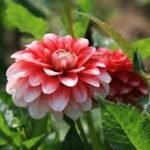
Chrysanthemums, with their captivating beauty and rich symbolism, have woven themselves into the tapestry of mythology and legend across various cultures throughout history. From tales of divine origins to stories of love, loss, and rebirth, chrysanthemums hold a special place in the collective imagination as symbols of beauty, mystery, and transformation. Let’s embark on a journey through the mythological and legendary realms where chrysanthemums reign supreme, captivating the hearts and minds of people through the ages.
**1. Divine Origins:**
In ancient mythology, chrysanthemums are often associated with stories of divine creation and celestial beings. According to Chinese legend, chrysanthemums were said to have been cultivated by the legendary figure Hou Yi, a skilled archer and immortal hero. It is believed that Hou Yi planted chrysanthemums in his garden to symbolize longevity, prosperity, and spiritual enlightenment. In Japanese mythology, chrysanthemums are associated with the sun goddess Amaterasu, who is said to have descended from heaven and scattered chrysanthemum petals across the earth, creating the first chrysanthemum flowers as symbols of her divine presence and blessings.
**2. Symbols of Immortality:**
Chrysanthemums are often regarded as symbols of immortality, longevity, and eternal youth in mythology and folklore. In Chinese mythology, chrysanthemums are known as “juhua,” which translates to “nine flowers,” symbolizing the nine levels of immortality in Taoist belief. It is believed that consuming chrysanthemum tea or inhaling the fragrance of chrysanthemum flowers can bestow longevity and vitality upon those who partake of them. In Japanese folklore, chrysanthemums are associated with the legendary elixir of life known as “kikyou no sake,” which is said to grant eternal youth and immortality to those who drink it.
**3. Symbols of Love and Romance:**
Chrysanthemums are often used as symbols of love, romance, and affection in mythology and legend. In Greek mythology, chrysanthemums are associated with the story of Apollo and Daphne, where Apollo’s unrequited love for Daphne leads her to transform into a chrysanthemum flower to escape his advances. In Japanese folklore, chrysanthemums are associated with the tragic love story of Hikaru Genji and Lady Murasaki, where chrysanthemums are used as symbols of their undying love and devotion to each other. Throughout history, chrysanthemums have been exchanged as tokens of affection and admiration between lovers, symbolizing the beauty and fragility of love in all its forms.
**4. Symbols of Mourning and Remembrance:**
Chrysanthemums are often used as symbols of mourning, remembrance, and reverence in mythology and folklore. In ancient Egypt, chrysanthemums were often placed on the tombs of pharaohs and royalty as offerings to guide them on their journey to the afterlife. In Victorian England, chrysanthemums were associated with funerary rites and memorial services, where they were used in funeral wreaths and bouquets as symbols of remembrance and eternal love. In Japanese culture, chrysanthemums are associated with the annual “Obon” festival, where they are used to honor the spirits of the deceased and to create a peaceful atmosphere of reflection and remembrance.
**5. Symbols of Spiritual Enlightenment:**
Chrysanthemums are often regarded as symbols of spiritual enlightenment, wisdom, and inner peace in mythology and legend. In Hindu mythology, chrysanthemums are associated with the goddess Saraswati, the embodiment of knowledge, creativity, and wisdom. It is believed that Saraswati is often depicted holding a chrysanthemum flower as a symbol of her divine presence and blessings. In Buddhist tradition, chrysanthemums are associated with the concept of enlightenment and the attainment of nirvana, where they symbolize the purity of the Buddha’s teachings and the awakening of the enlightened mind.
**Conclusion:**
The presence of chrysanthemums in mythology and legend speaks to their enduring significance and universal appeal as symbols of beauty, mystery, and transformation. Whether revered as symbols of divine creation, immortality, love, mourning, or spiritual enlightenment, chrysanthemums continue to captivate the hearts and minds of people around the world, inspiring awe, wonder, and reverence for the mysteries of life and the universe. Through the rich tapestry of mythological and legendary tales that surround them, chrysanthemums remind us of the timeless power of nature to inspire, uplift, and transform our lives in profound and meaningful ways.
**6. Symbols of Royalty and Nobility:**
Chrysanthemums have often been associated with royalty, nobility, and aristocracy in various mythological and legendary traditions. In ancient China, chrysanthemums were regarded as symbols of power, wealth, and prestige, and were cultivated exclusively for the emperor and the imperial court. The chrysanthemum became the official emblem of the Chinese emperor during the Song dynasty, symbolizing the authority and dignity of the imperial throne. In Japanese culture, chrysanthemums are associated with the imperial family and are used as the official emblem of the Japanese emperor. The chrysanthemum crest, known as the “kiku mon,” is used in imperial seals, banners, and ceremonial regalia to symbolize the divine right of the emperor to rule and the continuity of the imperial lineage.
**7. Symbols of Victory and Triumph:**
Chrysanthemums are often regarded as symbols of victory, triumph, and achievement in mythological and legendary tales. In ancient Rome, chrysanthemums were used to celebrate victorious military campaigns and triumphal processions, where they were strewn along the streets and offered as floral tributes to victorious generals and emperors. Chrysanthemums were also used in ancient Greece to crown victorious athletes and heroes in athletic competitions and Olympic games, symbolizing their triumph over adversity and their status as champions. In Japanese culture, chrysanthemums are associated with the concept of “banzai,” which means ten thousand years of long life and victory, and are often used in festive celebrations and auspicious occasions to wish for success, prosperity, and good fortune.
**8. Symbols of Transformation and Rebirth:**
Chrysanthemums are often regarded as symbols of transformation, renewal, and rebirth in mythological and legendary narratives. In ancient Egypt, chrysanthemums were associated with the sun god Ra and the concept of resurrection and immortality. It was believed that chrysanthemums possessed the power to guide the souls of the deceased to the afterlife and to facilitate their journey to the realm of the gods. In Japanese folklore, chrysanthemums are associated with the story of the “Tale of the Bamboo Cutter,” where the protagonist Kaguya-hime is transformed into a chrysanthemum flower to return to her celestial home on the moon. Chrysanthemums are also used in Japanese funerary rites and memorial services to symbolize the cycle of life, death, and rebirth, and to provide comfort to the grieving by reminding them of the eternal nature of the soul.
**9. Symbols of Protection and Warding Off Evil:**
Chrysanthemums are often regarded as symbols of protection, warding off evil spirits, and bringing blessings and good fortune in mythological and legendary traditions. In ancient China, chrysanthemums were believed to possess mystical powers that could ward off evil spirits and protect against misfortune and malevolent forces. Chrysanthemums were often used in talismans, amulets, and charms to bring luck, prosperity, and protection to those who carried them. In Japanese culture, chrysanthemums are associated with the concept of “kamikazari,” which means divine protection, and are often used in Shinto rituals and ceremonies to purify sacred spaces and to ward off evil influences. Chrysanthemums are also used in Japanese folklore to protect against curses, hexes, and malevolent spirits, and are often placed on doorways and windows as talismans of protection and good fortune.
**10. Symbols of Peace and Harmony:**
Chrysanthemums are often regarded as symbols of peace, harmony, and tranquility in mythological and legendary tales. In ancient China, chrysanthemums were used in Taoist rituals and ceremonies to create a peaceful and harmonious atmosphere conducive to meditation and spiritual contemplation. Chrysanthemums were also used in Chinese medicine and herbal remedies to promote relaxation, alleviate stress, and balance the body’s energies. In Japanese culture, chrysanthemums are associated with the concept of “wa,” which means harmony, and are often used in traditional tea ceremonies, flower arranging, and Zen gardens to evoke a sense of serenity and balance. Chrysanthemums are also used in Japanese art and poetry to symbolize the beauty of nature and the fleetingness of time, reminding people to cherish the present moment and to live in harmony with the rhythms of the natural world.









